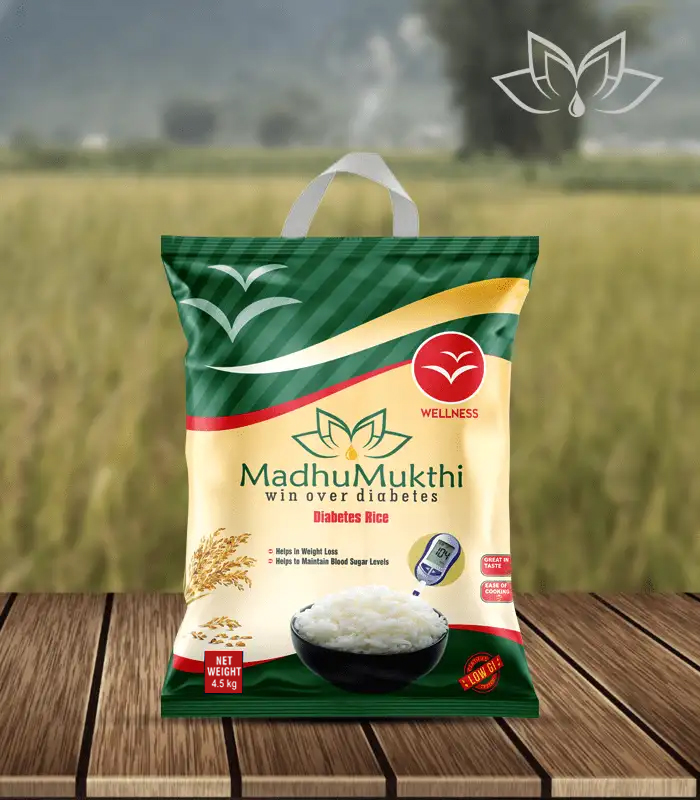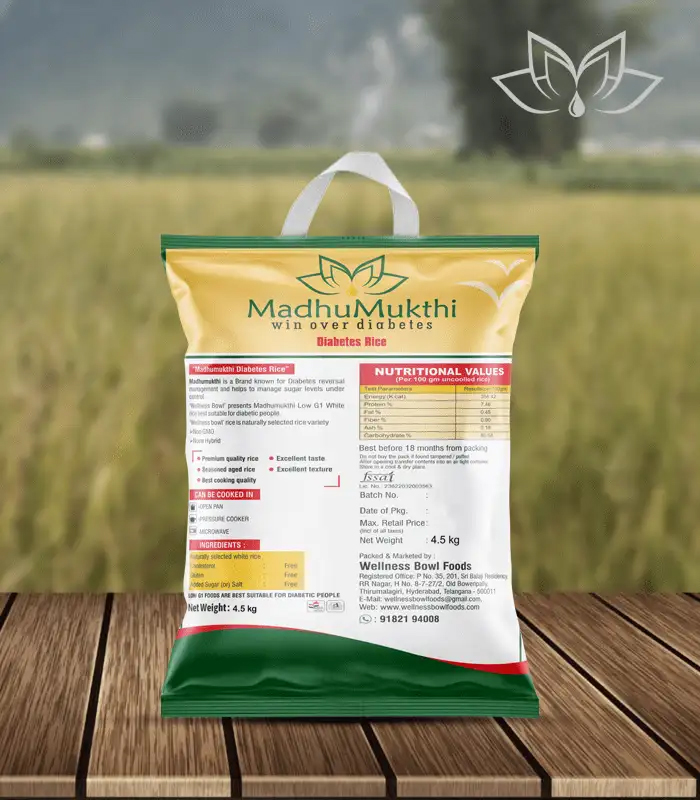
Keeping your blood sugar stable is key to your health. It affects your energy, your mood, and the risk of long-term illness. Think of blood sugar, also known as glucose, as the primary source of energy for the body. When you eat, carbs become glucose and go into your bloodstream. As your blood sugar rises, the pancreas makes insulin which helps to move glucose into cells for energy.
The glycemic index is important for understanding how various foods affect blood sugar levels. It’s a ranking system that assigns a value to carbohydrate-containing foods based on their impact on blood sugar levels compared to pure glucose, which is assigned a GI of 100.
This blog aims to empower you with knowledge about low GI foods and their benefits for managing blood sugar. By understanding the GI and incorporating low GI options into your diet, you can take a proactive step towards a healthier lifestyle.
Understanding Glycemic Index
The glycemic index shows how fast and how much a food’s carbs can boost blood sugar levels. Remember, the GI doesn’t show the real sugar amount in food. It shows how much that food could raise blood sugar.
GI values are categorized as follows:
Low GI (55 or below): These foods have a minimal impact on blood sugar levels and are generally recommended for a healthy diet.
Medium GI (56-69): These foods cause a moderate rise in blood sugar levels.
High GI (70 or above): These foods can lead to a rapid spike in blood sugar levels.
Benefits of Low GI Food
Advantages of Consuming Low GI foods:
Stable Blood Sugar Levels: Low GI food digestion is slow. This leads to steady blood sugar levels over time. High GI foods work differently. They causes blood sugar to spike and dip rapidly. This helps maintain energy levels and reduces the risk of blood sugar crashes and cravings.
Weight Management: Low GI foods often contain high fiber, which promotes satiety and keeps you feeling fuller for longer, potentially aiding in weight management efforts.
Chronic Disease Prevention: Research shows eating foods with a low GI can lower your chances of getting type 2 diabetes, heart issues, and some cancers.
Improved Satiety: Low GI foods with high fiber content can help you feel full for longer, reducing hunger pangs and promoting better appetite control.
Low glycemic index foods Chart
Here’s a comprehensive list of low GI foods to incorporate into your diet:
Fruits with low glycemic index:
| Fruits | GI Value |
| Apples | 36 |
| Berries | 25-40 |
| Pears | 38 |
| Grapefruit | 25 |
| Oranges | 40 |
| Kiwifruit | 52 |
Vegetables with low glycemic index:
| Vegetables | GI Value |
| Broccoli | 15 |
| Spinach | 1 |
| Carrots | 35 |
| Bell peppers | 15-30 |
| Green beans | 30 |
| Tomatoes | 40 |
Grains with low glycemic index:
| Grains | GI Value |
| Quinoa | 53 |
| Brown rice | 50 |
| Whole-wheat bread | 52 |
| Oats | 55 |
| Barley | 40 |
Legumes with low glycemic index:
| Legumes | GI Value |
| Lentils | 25 |
| Chickpeas | 28 |
| Kidney beans | 24 |
| Black beans | 25 |
Examples:
A bowl of oatmeal (GI: 55) with berries (GI: 25-40) and nuts (low GI) provides a balanced breakfast with a moderate GI.
Similarly, a salad with grilled chicken (low GI), spinach (GI: 1), and carrots (GI: 35) offers a satisfying lunch option with a low GI impact.
Remember, variety is key! Aim to incorporate a diverse range of low GI foods from different categories into your diet for optimal health benefits.
Creative Ways to Include Low GI Foods in Your Diet:
Start your day with a smoothie: Blend low GI fruits like berries, spinach, and yogurt for a refreshing and nutritious breakfast.
Snack on sliced fruits: Pair apple slices with almond butter or enjoy a handful of mixed berries for a healthy and satisfying snack.
Incorporate fruits into salads: Add chopped apples, pears, or oranges to your salad for a burst of sweetness and additional nutrients.
Bake with low GI fruits: Use applesauce or mashed pears as a natural sweetener in muffins, breads, or pancakes.
Grill fruits: Sliced peaches, pineapple, or watermelon can be grilled for a unique and delicious side dish.
Roasted vegetable medley: Toss your favorite low GI vegetables with olive oil, herbs, and spices, and roast them in the oven for a simple and flavorful side dish.
Vegetable stir-fry: Stir-fry low GI vegetables like broccoli, carrots, and bell peppers with tofu or lean protein for a quick and healthy meal.
Vegetable soup: A homemade vegetable soup using low GI vegetables and broth is a comforting and nutritious option for colder days.
Veggie burgers: Create your own veggie burgers using low GI vegetables like lentils, black beans, and mushrooms.
Glycemic Load and Balancing Choices
While the GI is a valuable tool, it doesn’t consider the total amount of carbohydrates in a food. This is where the concept of glycemic load (GL) comes in. GL takes into account both the GI and the amount of carbohydrates per serving of a food, providing a more comprehensive picture of its potential impact on blood sugar.
Here are some tips for balancing high and low GI foods to create meals with a moderate glycemic load:
Pair high GI foods with low GI options: Combine a slice of whole-wheat bread (medium GI) with avocado (low GI) for a balanced breakfast.
Focus on portion control: Even low GI foods can impact blood sugar if consumed in large quantities. Be mindful of portion sizes and avoid overeating.
Include protein and healthy fats: Adding protein and healthy fats to meals can help slow down the absorption of carbohydrates and reduce blood sugar spikes.
Sample Glycemic Load Chart:
| Food | Glycemic Index (GI) | Carbohydrates per Serving (g) | Glycemic Load (GL) |
| White Bread | 75 | 25 | 18.75 |
| Oat Meal | 55 | 28 | 15.4 |
| Apple | 36 | 25 | 9.0 |
Exercise for Diabetes Management
Regular physical activity plays a crucial role in managing diabetes and promoting overall health. Exercise helps improve insulin sensitivity, allowing your body to utilize glucose more effectively, and can lead to better blood sugar control.
Here are some of the best exercises for diabetes at home:
Walking: This simple yet effective exercise is accessible to most people and can be easily incorporated into your daily routine.
Brisk walking/jogging: As your fitness level improves, you can increase the intensity of your walks or jogs for a greater challenge.
Strength training: Building muscle mass can improve insulin sensitivity and help with weight management. Bodyweight exercises, resistance bands, or free weights can be used for strength training at home.
Yoga: Yoga combines physical postures, breathing exercises, and meditation, offering benefits for both physical and mental health.
Conclusion
Prioritizing low GI foods can be a valuable strategy for maintaining stable blood sugar levels and promoting overall health. By incorporating these options into your diet, you can experience numerous benefits, including improved energy levels, better weight management, and potentially reduced risks of chronic diseases.
Remember, consistency is key! Aim to gradually incorporate more low GI choices into your meals and snacks, while also maintaining a balanced diet chart with plenty of fruits, vegetables, whole grains, and lean protein.
By making informed choices and prioritizing low GI options, you can take control of your health and embark on a journey towards a healthier and more vibrant life.





